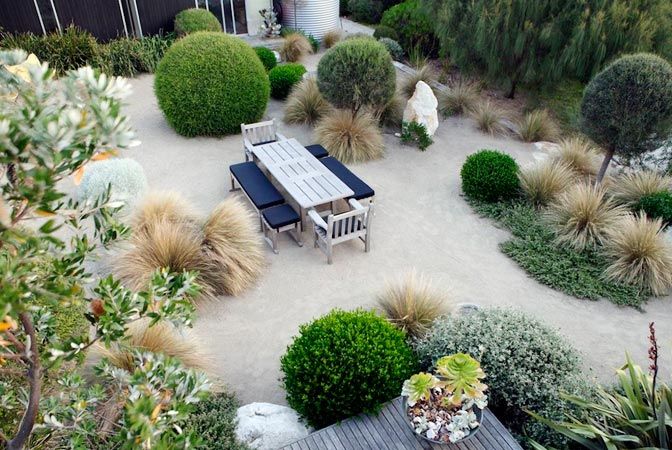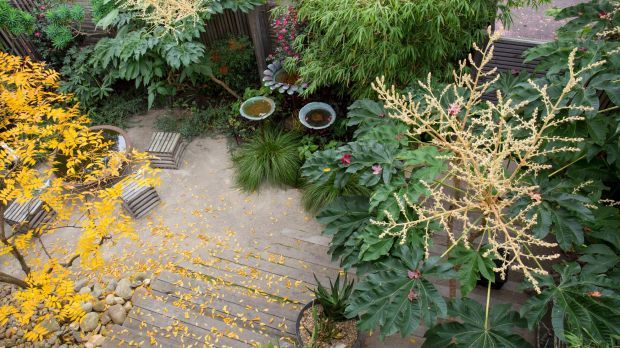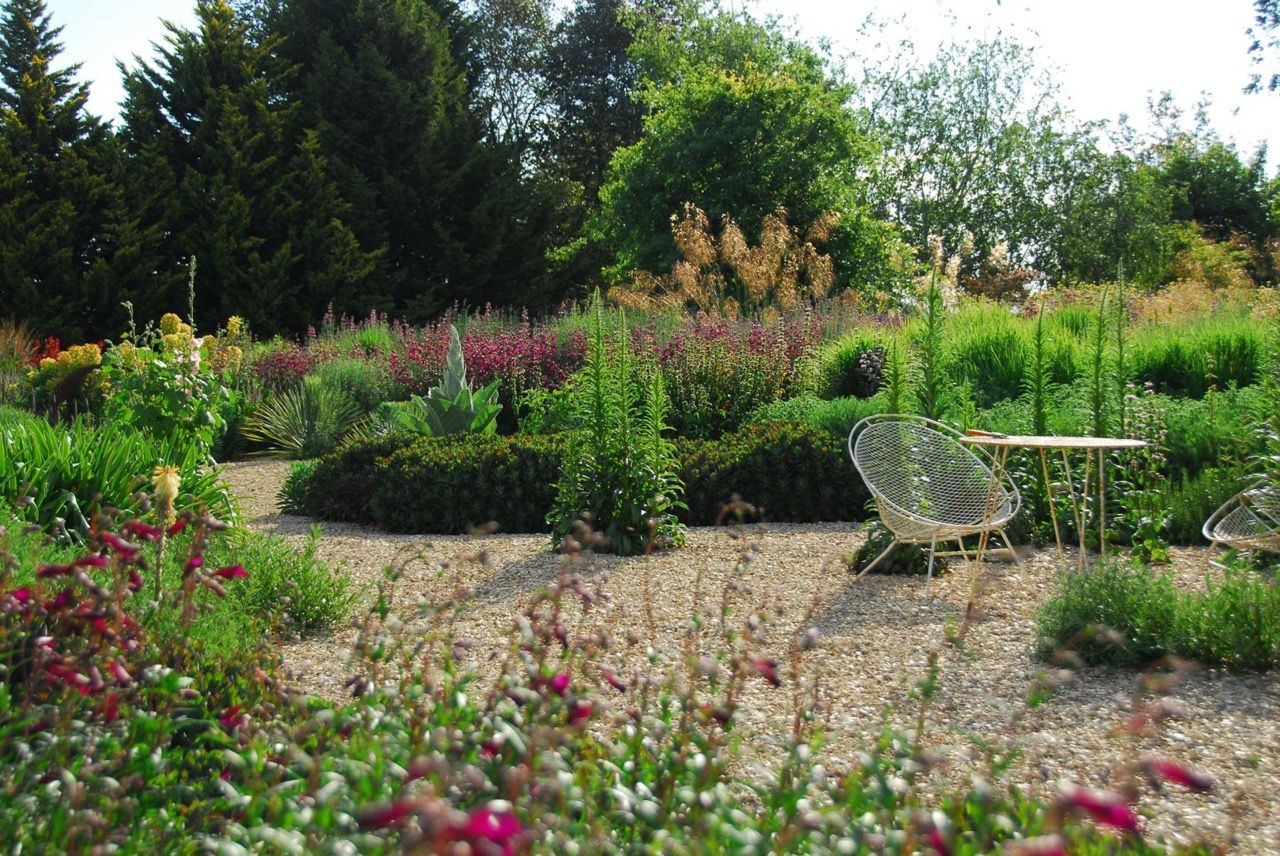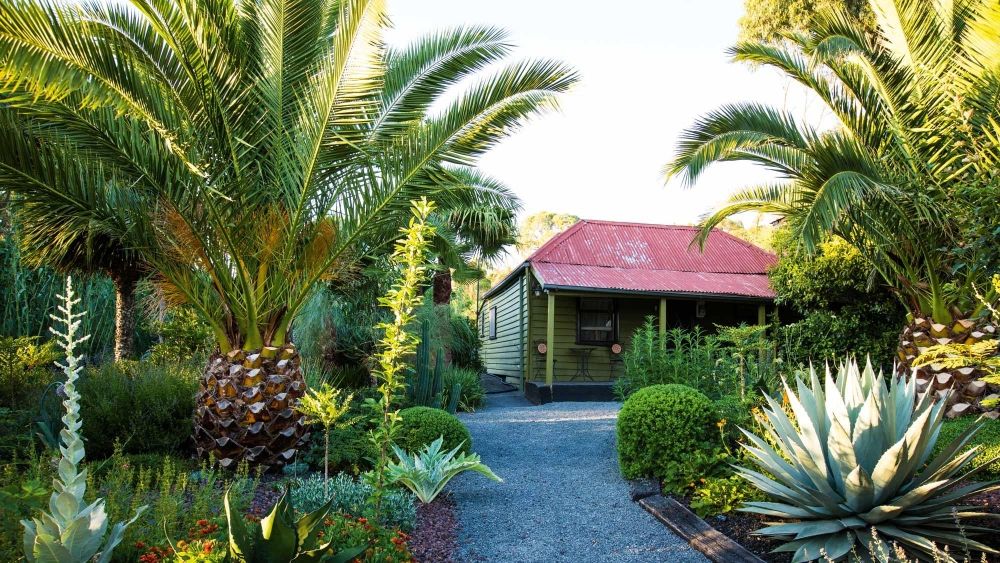Australia. Big continent. Vast, you might say. My familiarity with Australian garden design, however, is the opposite of vast. Southwestern Australia is one of the five true mediterranean climate zones, like where I live here in Los Angeles — dry summers, wet winters (theoretically). And also like here at home, climate change is unsettling longstanding rainfall patterns. In many respects, we are close compatriots, horticulturally speaking, and I’m enjoying becoming more and more familiar with a few of its many exceedingly gorgeous plants. So many of Australia’s plants feed my hummingbirds all winter. Yet what I know about Australian garden design would fit in a hummingbird’s beak. English, French, Spanish, Dutch — a decent amount of garden design news gets through. But Australia? It’s basically a news blackout. There’s The Planthunter, Georgina Reid’s excellent blog, which doesn’t seem to load for me lately. She’s even done a piece on an Australian designer I’ve been looking into today, Fiona Brockhoff, but I can’t load the article (“Fiona Brockhoff’s Seaside Rebellion.”)
Here’s a couple photos of Ms. Brockhoff’s work to whet your curiosity too. Dry gardens with a beautiful control of volume and tension.


photos via The Sydney Morning Herald, “Renowned designer Fiona Brockhoff opens her Toorak garden.”

Michael McCoy is another high-profile garden designer in Australia. You can learn more about him via his blog The Gardenist. Verbascums, Stipa gigantea, penstemons, euphorbias — we could be in Beth Chatto’s garden in East Anglia. It would seem Australian designers are also scouring the world for beautiful plants to handle their summer dry gardens, as well as utilizing the best of their own native plants –just like home, where a mix of exotic and native plants are being called on to help deal with an unpredictably changing climate.

So alluringly strange yet familiar at the same time. Greg Lyons’ garden, photos by photographer Claire Takacs for Homelife.

Photos of Greg Lyons’ garden by photographer Claire Takacs for Homelife.
It only makes sense to do some research, because you never know when a trip to Australia might present itself, right?

How I love The Planthunter , but will investigate The Gardenist. Do you suppose our Aussie friends are as mad to collect Ceanothus and Manzinitas as we are to collect Banksias and Leucodendrons ? I’m still slightly too cold for many Australian plants-it’s those damn 20’s .
I’m always looking for input on Australian gardens too so thanks for providing me a couple of new links. If you haven’t found them already, you may also want to look at Peter Fudge and Phillip Withers.
Do you get the Planthunter emails? You must. And you really need to go to Australia, for research.
I agree with Loree, you owe it to yourself to do some on-the-spot investigation!
@Kathy, agaves, yuccas, yes, I bet they’re just as mad for our plants.
@Kris, thanks for those names!
@Loree, yes, I do get the emails. Still can’t get the site to load this morning. Dustin just got back from Oz and was thunderstruck.
@Peter, and maybe some bloggers will join me!?
One place I would really really really like to visit (besides South Africa) but an 18 hr (or whatever it is) plane ride, how to get through that? I see a UK touch of formal orderliness in those photos that isn’t present in CA gardens (at least not in mine, ha ha!).
Hoov, yes, there is the issue of that looong flight. So a once-in-a-lifetime trip has to be thoroughly planned to get the most out of it.
GardenDrum dot com has supplied most of my impressions of Australian gardens, and they’ve had lots of design-focused articles in the past (not so much lately, so see if the archives are accessible). Oz’s eco-regions are so strongly different that the plant palettes and garden styles must really cover the gamut.
Oh, those Australian plants…so gorgeous. I appreciate your description of “dry gardens with a beautiful control of volume and tension” – I didn’t realize it, but that’s a little what I would like to achieve. These are great resources listed, thanks Denise!
With winter apparently set to keep a tight grip on the landscape, nothing has brought more delight and distraction than The Planthunter. Thanks so much for the pointer! Shaking my head at how long it’s stayed under my radar; no matter — all the more archives to explore…